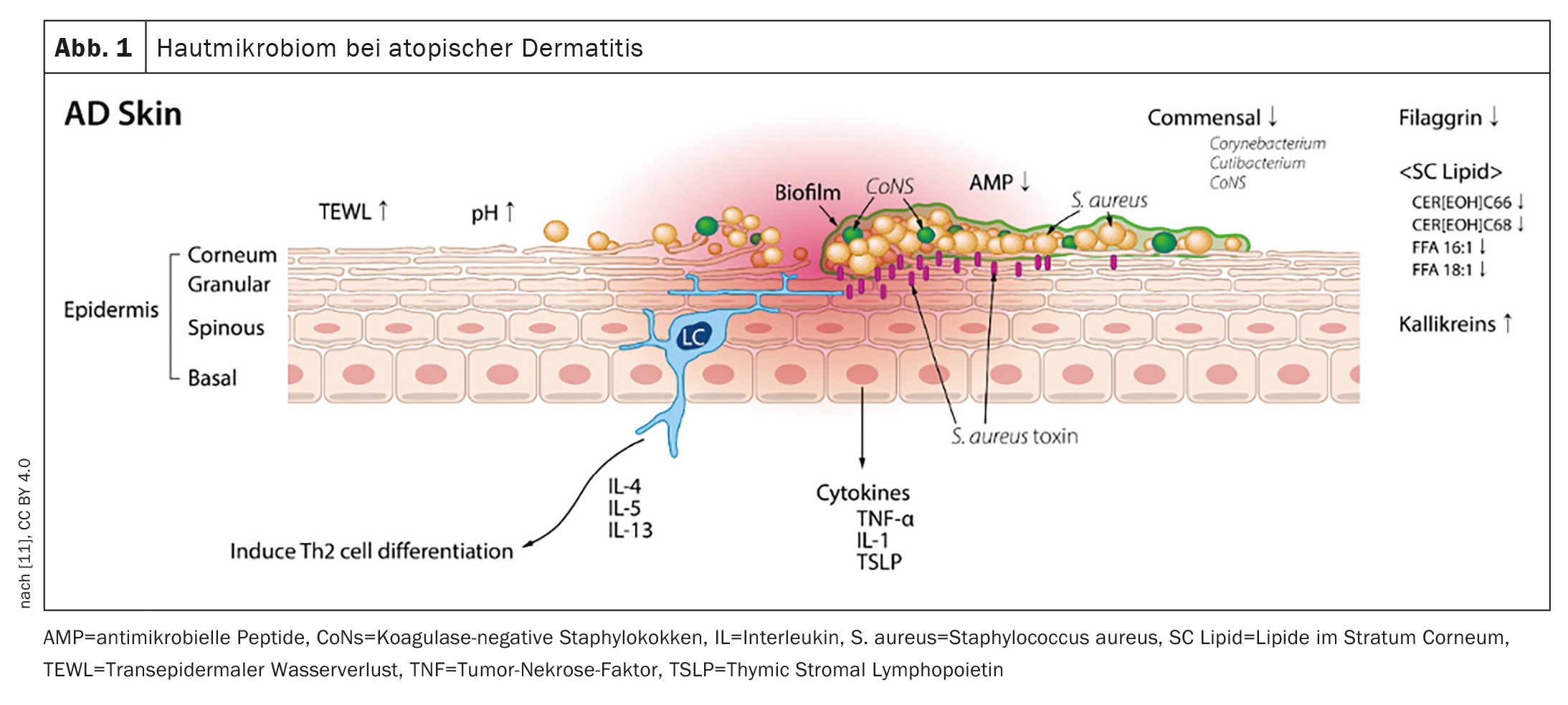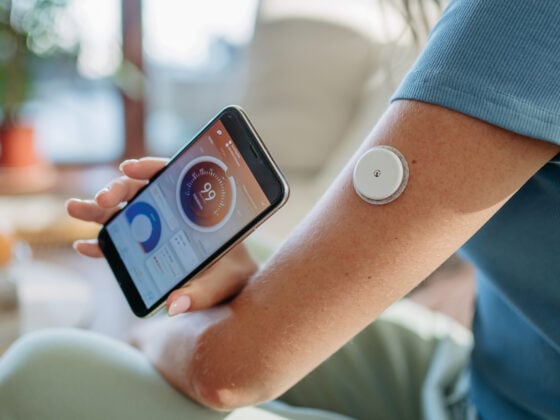Exploring the links between the cutaneous microbiome and the severity of atopic dermatitis (AD) and patient-related co-factors is an important aspect in the development of new personalized AD therapies, especially those targeting the skin microbiome. With this in mind, an international research team launched an interesting study that was published in JEADV in 2023.
Atopic dermatitis (AD) is characterized by polymorphic eczematous lesions with intense, persistent itching [1–3,10]. The etiology is complex and not yet fully understood. A variety of genetic and environmental factors play a role in the pathogenesis. These include dysregulated proinflammatory immune reactions and an impaired epidermal barrier due to filaggrin mutations [4,5]. In addition, empirical studies indicate that AD is associated with a dysbiosis of the skin microbiome [6].
Molecular biological analysis of the cutaneous microbiome
In summary of previous findings, it can be stated that the cutaneous microbiome of AD patients is characterized by reduced microbial diversity and an altered composition compared to skin-healthy individuals [6]. There is evidence that increased colonization with Staphylococcus aureus (S. aureus) reduces the diversity of the cutaneous microbiota in the area of AD predilection sites and that AD severity is associated with the skin microbiome [7–9,10]. To find out more, an international research team launched a study in which the skin microbiome of 48 adults with moderate to severe AD was analyzed using next generation sequencing (16S rRNA gene amplicon** sequencing) [9].
** Amplicons” are the selectively amplified DNA fragments
Conclusion: AD severity and microbial diversity are associated
The evaluations showed that in lesional skin, the severity of AD is positively associated with the relative frequency of S. aureus (r=0.53$, p<0.001) and that there is a negative correlation with the “evenness”, i.e. an equal distribution of different bacterial species (r= -0.58, p<0.001) [9]. Multiple regression confirmed the association between AD severity and microbiome diversity, including Shannon index& (in lesional skin, p<0.001), evenness (in non-lesional skin, p=0.015) and relative abundance of S. aureus (p <0.012). These results are consistent with previous study findings and provide valuable additional insights. For example, the reduced “evenness” is mainly due to the relative abundance of S. aureus and less to a reduced “richness” (number of bacterial genera/species) of the microbiome. Furthermore, the severity of AD was associated with the patients’ IgE levels (p<0.001), age (p<0.034) and gender (p=0.012).
$ r=correlation coefficient (Spearman’s rank correlation coefficient)
& Shannon index = Diversity index according to Shannon
Literature:
- Weidinger S, et al: Nature Rev Dis Primers 2018; 4(1): 1.
- Sroka-Tomaszewska J, Trzeciak M: Int J Mol Sci 2021; 22(8): 4130.
- Wasserbauer N, Ballow M: Am J Med 2009; 122(2): 121-125.
- Guttman-Yassky E, et al: Semin Cutan Med Surg 2017; 36(3): 100-103.
- Sacotte R, Silverberg JI: Clin Dermatol. 2018; 36(5): 595-605.
- Paller AS, et al: J Allergy Clin Immunol 2019; 143(1): 26-35.
- Nakatsuji T, et al: Sci Transl Med 2017; 9(378).
- Kong HH, et al: Genome Res 2012; 22(5): 850-859.
- Rauer L, et al: JEADV 2023; 37(4): 772-782.
- Deng T, et al: Clin Cosmet Investig Dermatol 2023; 16: 2153-2173.
- Kim JE, Kim HS: Microbiome of the Skin and Gut in Atopic Dermatitis (AD): Understanding the Pathophysiology and Finding Novel Management Strategies. Journal of Clinical Medicine 2019; 8(4): 444. www.mdpi.com/2077-0383/8/4/444#,(last accessed 17.10.2023).
DERMATOLOGY PRACTICE 2023; 33(5): 19













